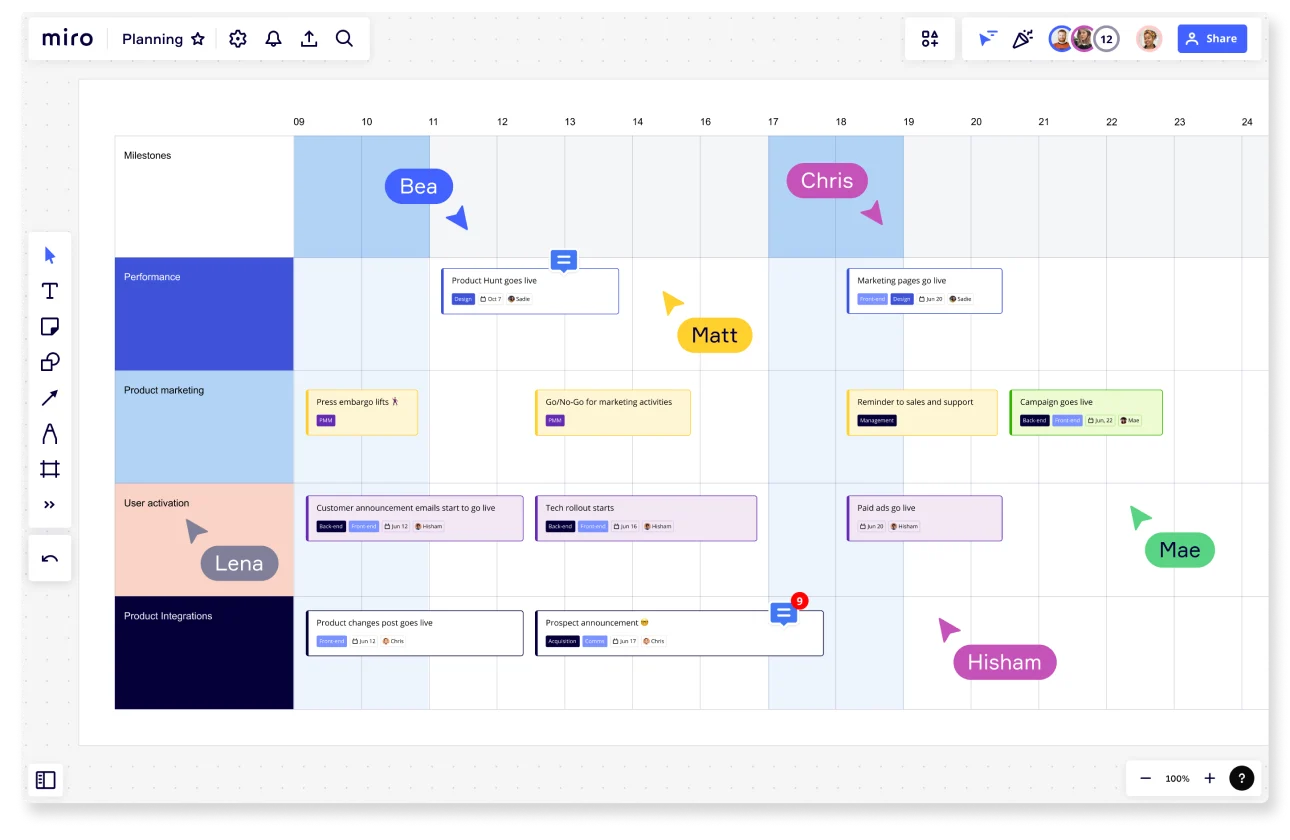
Strategic roadmap

What is a strategic roadmap: A quick intro
Just as a journey cannot be embarked upon without a roadmap, businesses cannot achieve their goals without a strategic roadmap. A strategic roadmap is a visual depiction of a company's strategic goals and the steps necessary to accomplish them. It serves as a clear guide to align everyone in an organization towards its long-term objectives, ensuring the understanding of the overall vision and individual responsibilities.
Understanding how a strategic roadmap works
A strategic roadmap provides a bird's eye view of an organization's direction, detailing where it is, where it wants to go, and how to get there. It outlines key strategic goals, initiatives, and timelines, highlighting dependencies and potential obstacles.
The roadmap is not set in stone; it evolves with the organization. As business conditions or strategic objectives change, create a roadmap that you update easily to reflect these shifts. Importantly, it serves as a communication tool, fostering transparency and alignment across all layers of an organization, from leadership to individual contributors.
Components of a typical strategic roadmap
A typical strategic roadmap consists of several critical components:
Strategic objectives: These are the high-level goals your organization aims to achieve. They serve as the guiding north star for your roadmap.
Initiatives: These are major efforts or projects your organization will undertake to achieve the strategic objectives.
Actions: These are specific tasks related to each initiative. They represent the "how" of achieving each initiative and, ultimately, the strategic objectives.
Timelines: Timelines offer a temporal view of when initiatives and actions are expected to start and end, indicating progress and helping manage expectations.
Milestones: Significant events or achievements along the roadmap that indicate progress towards strategic objectives.
Dependencies and risks: These outline potential obstacles or factors that could impact the progression or success of your initiatives.
Advantages of making a strategic roadmap
A strategic roadmap offers many benefits:
Alignment: It aligns all stakeholders on the same page about the company's direction, goals, and how to achieve them.
Prioritization: It helps identify and focus on what's most critical to the organization's success.
Communication: It is an excellent communication tool, simplifying complex strategies into an easily digestible format.
Flexibility: It offers a framework that can be adapted to changes in the business environment or strategic objectives.
How to make a strategic roadmap
Creating a strategic roadmap is a thoughtful process:
Identify strategic objectives: Understand what you aim to achieve in the long term. This might involve increasing market share, launching new products, or improving customer satisfaction.
Develop initiatives: Identify the key projects or actions that will contribute to achieving your objectives.
Define actions: Break down each initiative into specific tasks, providing clear direction for teams and people.
Set timelines and milestones: Establish a timeline for each initiative and action. Identify critical milestones to provide a sense of progress.
Recognize dependencies and risks: Acknowledge potential roadblocks and plan mitigations. Understanding risks allows for better contingency planning.
Review and refine: Regularly review and update your roadmap to ensure it stays relevant.
Strategic roadmap best practices
Creating a strategic roadmap is not just about laying out a plan. It's also about how you execute that plan. And to ensure the effectiveness of your roadmap, here are some key considerations.
The simplicity of your roadmap is paramount. It should be easily understood by anyone in your organization, regardless of their role. Avoid jargon and unnecessary complexity that could lead to misinterpretation or confusion.
Remember that a roadmap is not created in isolation. To ensure buy-in and alignment, you should involve all key stakeholders in the roadmap creation process. This enriches the roadmap with diverse inputs and fosters a sense of collective ownership.
Flexibility is key in any strategic roadmap. Changes in the business environment are inevitable, and your roadmap should be designed to adapt to these changes while keeping sight of the long-term strategic objectives.
Communication is another crucial element of effective roadmapping. Regular updates about the roadmap progress help maintain alignment and engagement among all stakeholders. This transparency fosters a sense of involvement and commitment throughout the organization.
And finally, to make all this easier, consider using a visual tool like Miro. This can make your roadmap visually appealing, easy to understand, and collaborative, fostering better communication and alignment.
In conclusion, a strategic roadmap is more than a tool - it's a compass that navigates your organization toward its goals. As a knowledge worker, understanding and developing a strategic roadmap can significantly enhance your contributions to your organization's strategic initiatives. So, embrace the journey and chart your course to success!